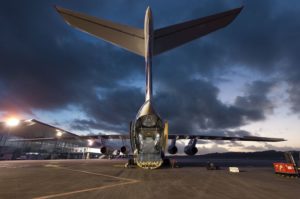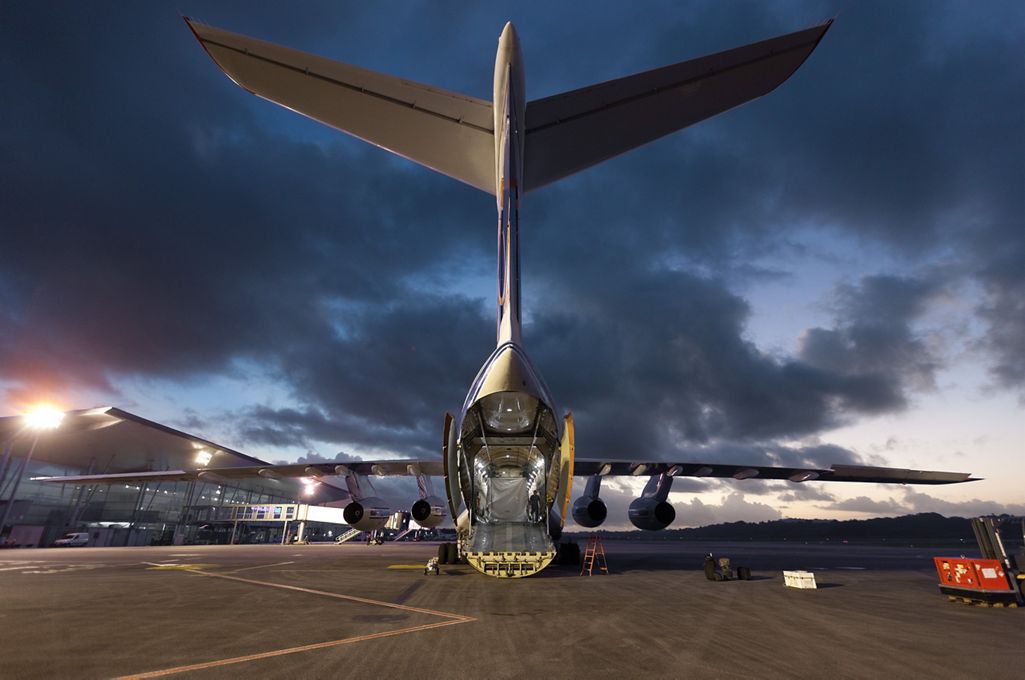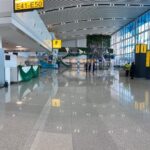
As air travel returns to normal after the COVID-19 economic devastation, which constricted international flight operations, there are indications that the Nigerian Airspace Management Agency (NAMA) may generate about $1 billion annually from over-fliers charges, with increase in traffic of flights across Nigeria’s airspace.
According to industry analysts, the projected revenue is possible, especially when there is effective communication between the pilots operating the flights and the air traffic controllers.
Over-fliers refers to flights flying across Nigerian airspace to other destinations from different parts of the world but pass through Nigeria and utilising Nigeria’s weather forecast, flight traffic on their routes, altitude and other information that would enable the pilots fly safely to their destinations.
The charges paid by the airlines are collected for NAMA by the International Air Transport Association (IATA), but for Nigeria to render the service through its air traffic controllers, Nigeria’s upper airspace, where these flights pass through, must have effective communication between the pilots operating the flights and air traffic controllers, according to analysts’ views. Nigeria’s airspace is known as Kano Flight Information Region.
The acting Managing Director of NAMA, Matthew Pwajok, told THISDAY in an interview that there was hope that more flights would pass through Nigeria’s airspace as more airlines operate international flights, disclosing that the number of flights that pass through the airspace is increasing.
“I don’t have the figures off-head but I know we checked the statistics of over-flier flights over Kano recently. We had about 1,456 flights over flying the Nigerian airspace in January 2022. As of September 2022 we had over 2,100 over flights. That is a marginal increase and the analysis showed that some airlines that were over flying from Europe to Johannesburg, to Cape Town, to Durban, to Luanda and to the DRC that were hitherto not following the Nigerian airspace, returned back, and we attributed that to the implementation of communication programme that I told you,” he said.
Pwajok explained that the new communication equipment installed to enhance communication in the airspace has significantly improved ground to air, and air to air communication.
“There is free routing in the airspace. Analysts have shown that flying through Nigerian airspace shortens flight time by about 10 minutes on some routes. This means huge cost in fuel saving for the airlines. This is because some of the routes before now were what we call conventional routes. Routes that are designed to follow ground equipment, ground based navigational systems. But with Performance Base Navigation (which is based on satellite), you can fly from any point to another point directly,” he said.
The NAMA boss further explained that NAMA has effectively implemented the performance-based navigation that it has attracted more international carriers to fly through Nigeria.
“We leverage on that to implement what we call the Free Routing Airspace, which is providing or availing aircraft with capability to fly any point to any point at wind advantage. Normally, when an aircraft is flying with a five nautical tail wind; that means the speed of the aircraft is being increased by five nautical miles per hour. And that goes a long way over the entire route to lead to improvement to shorter flight time. And by implication reduce the fuel consumption for flight over that same route. The same distance he might have flown for a certain time is shortened because the flight has wind advantage. Naturally it will reduce the flight time even on the same route.
“But what we have done is to create more direct routes, shorter routes not based on ground equipment but based on satellite navigation. They can fly from one point to the other; satellite navigation is available at any point and can guide you. So we use the Total Radar Coverage we have and we use performance based navigation to implement what we call the Free Routing Airspace that allows aircraft to fly from any point to any point directly, thereby flying shorter routes, saving fuel and pilot workload,” he stated.
According to Pwajok, the number of improvement on over flight is reasonable, noting that if Nigeria recorded1, 500 over-fliers in January, “we had an addition of about 600, and to us that is more than a marginal improvement. We are hoping to also implement more improvements that will guarantee safety and efficiency, and security of lives over our airspace to attract more inflow of airlines that might before now be using other routes,” Pwajok said.
According to him, NAMA has projected expectation of more income since the agency had an assurance that more flights would be passing through the airspace to other international destination.
“Airlines are coming out of COVID-19 restart and recovery and trying to build up resilience. The same thing with the air navigation service providers, we are trying to recover from the COVID-19 impact. So the number of flights are also picking up. In addition to those that were not flying before; airlines are developing increased recovery and restoring some of their routes and connections that were stopped because of the COVID-19,” Pwajok stated.
He said that with the initiative of Single African Air Transport Market (SAATM), the African Union is projecting through AFCAC (African Civil Aviation Commission) an initiative for a single African sky is also being made and Single African Air Traffic Management (ATM) system is also being made, remarking that these are all initiatives aimed at increasing connectivity between African states, and when such connectivity is increased, the number of flights would increase and then of course,“we expect that revenue will increase.”

“So, we are reasonablygetting the assurance that both the numbers and the revenue will increase. We expect that there should be an improvement. If all these concepts of improving connectivity are done, if Nigeria Air comes on stream we expect that it should be able to take advantage of some of the Bilateral Air Service Agreement (BASA) to increase flight connectivity to some Africa countries. And when this increases, of course, it naturally gives you more improved revenue to the agency. And also as the economy improves, we expect activities to increase. And as political activities also increases, movement of flight in general aviation, commercial flight will also increase.
“That will naturally increase our revenue as time goes on. So we are very optimistic that as we recover from the COVID-19 and as we expand the industry, being witnessed with the number of airports that are coming up, there has to be flights to open up to these new airports. And as they open up also, revenue will accrue to the industry as more and more air services are provided both internally and also externally,’ the NAMA boss added.
THISDAY






